Category Archives: Generative AI
RAG Pipeline: 6 Steps for Creating Naive RAG App
If you’re starting with large language models, you must have heard of RAG (Retrieval-Augmented Generation). It’s the magic that lets AI chatbots talk about your data—your company’s PDFs, your private notes, or any new information—without “hallucinating.” It might sound complex, but the core logic of a simple RAG pipeline can be boiled down to six simple steps. We’re going to walk through the “conductor” script that runs this pipeline, showing you how data flows from a raw document to a smart, factual answer. Our entire system is built on this simple mantra: Let’s look at the Python code that brings this mantra to life. Step 0: Loading Our “Brains” (The …
Retrieval Augmented Generation (RAG) & LLM: Examples
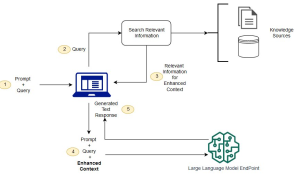
Last updated: 25th Jan, 2025 Have you ever wondered how to seamlessly integrate the vast knowledge of Large Language Models (LLMs) with the specificity of domain-specific knowledge stored in file storage, relational databases, graph databases, vector databases, etc? As the world of LLMs continues to evolve, the need for more sophisticated and contextually relevant responses from LLMs becomes paramount. Lack of contextual knowledge can result in LLM hallucination thereby producing inaccurate, unsafe, and factually incorrect responses. This is where question & context augmentation to prompts is used for contextually sensitive answer generation with LLMs, and, the retrieval-augmented generation method, comes into the picture. For data scientists and product managers keen …
How Indexing Works in LLM-Based RAG Applications
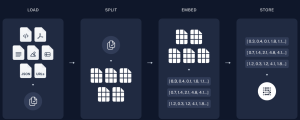
When building a Retrieval-Augmented Generation (RAG) application powered by Large Language Models (LLMs), which combine the ability to generate human-like text with advanced retrieval mechanisms for precise and contextually relevant information, effective indexing plays a pivotal role. It ensures that only the most contextually relevant data is retrieved and fed into the LLM, improving the quality and accuracy of the generated responses. This process reduces noise, optimizes token usage, and directly impacts the application’s ability to handle large datasets efficiently. RAG applications combine the generative capabilities of LLMs with information retrieval, making them ideal for tasks such as question-answering, summarization, or domain-specific problem-solving. This blog will walk you through the …
Completion Model vs Chat Model: Python Examples

In this blog, we will learn about the concepts of completion and chat large language models (LLMs) with the help of Python examples. What’s the Completion Model in LLM? A completion model is a type of LLM that takes a text input and generates a text output, which is called a completion. In other words, a completion model is a type of LLM that generates text that continues from a given prompt or partial input. When provided with an initial piece of text, the model uses its trained knowledge to predict and generate the most likely subsequent text. A completion model can generate summaries, translations, stories, code, lyrics, etc depending on …
Autoencoder vs Variational Autoencoder (VAE): Differences, Example
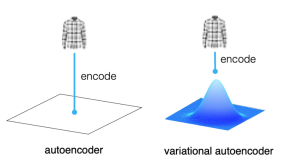
Last updated: 12th May, 2024 In the world of generative AI models, autoencoders (AE) and variational autoencoders (VAEs) have emerged as powerful unsupervised learning techniques for data representation, compression, and generation. While they share some similarities, these algorithms have unique properties and applications that distinguish them. This blog post aims to help machine learning / deep learning enthusiasts understand these two methods, their key differences, and how they can be utilized in various data-driven tasks. We will learn about autoencoders and VAEs, understanding their core components, working mechanisms, and common use cases. We will also try and understand their differences in terms of architecture, objectives, and outcomes. What are Autoencoders? …
Large Language Models (LLMs): Types, Examples
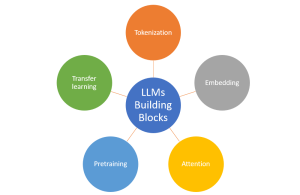
Last updated: 31st Jan, 2024 Large language models (LLMs), being the key pillar of generative AI, have been gaining traction in the world of natural language processing (NLP) due to their ability to process massive amounts of text and generate accurate results related to predicting the next word in a sentence, given all the previous words. These different LLM models are trained on a large or broad corpus of text datasets, which contain hundreds of millions to billions of words. LLMs, as they are known, rely on complex algorithms including transformer architectures that shift through large datasets and recognize patterns at the word level. This data helps the LLMs better understand …
LLM Optimization for Inference – Techniques, Examples
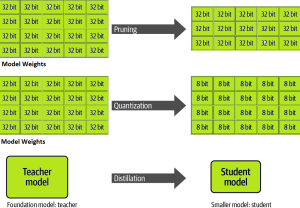
One of the common challenges faced with the deployment of large language models (LLMs) while achieving low-latency completions (inferences) is the size of the LLMs. The size of LLM throws challenges in terms of compute, storage, and memory requirements. And, the solution to this is to optimize the LLM deployment by taking advantage of model compression techniques that aim to reduce the size of the model. In this blog, we will look into three different optimization techniques namely pruning, quantization, and distillation along with their examples. These techniques help model load quickly while enabling reduced latency during LLM inference. They reduce the resource requirements for the compute, storage, and memory. …
Transfer Learning vs Fine Tuning LLMs: Differences
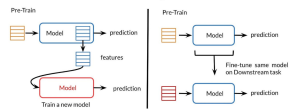
Last updated: 23rd Jan, 2024 Two NLP concepts that are fundamental to large language models (LLMs) are transfer learning and fine-tuning pre-trained LLMs. Rather, true fine-tuning can also be termed as full fine-tuning because transfer learning is also a form of fine-tuning. Despite their interconnected nature, they are distinct methodologies that serve unique purposes when training foundation LLMs to achieve different objectives. In this blog, we will explore the differences between transfer Learning and full fine-tuning, learning about their characteristics and how they come into play in real-world scenarios related to natural language understanding (NLU) and natural language generation (NLG) tasks with the help of examples. We will also learn …
AI-assisted Software Development: Tools & Processes

In the rapidly evolving landscape of software development, the integration of artificial intelligence (AI) and generative AI (Gen AI) is not just a luxury but a cornerstone for enhancing software development velocity. This blog delves into the key aspects of Gen AI and AI-assisted software development, presenting actionable takeaways for software leaders, including engineering managers, project managers, product managers, and software engineers. We will look into different tools and related processes that can be enhanced across the entire software development lifecycle. Design & Architect: Crafting the Blueprint Integrate the following tools to speed up the design process while ensuring adherence to best practices, significantly reducing design iteration times. Code & …
Transformer Architecture in Deep Learning: Examples
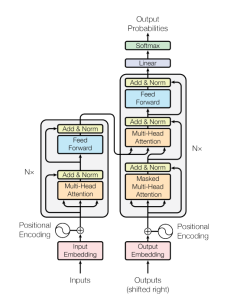
The Transformer model architecture, introduced by Vaswani et al. in 2017, is a deep learning model that has revolutionized the field of natural language processing (NLP) giving rise to large language models (LLMs) such as BERT, GPT, T5, etc. In this blog, we will learn about the details of transformer model architecture with the help of examples and references from the mother paper – Attention is All You Need. Transformer Block – Core Building Block of Transformer Model Architecture Before getting to understand the details of transformer model architecture, let’s understand the key building block termed transformer block. The core building block of the Transformer architecture consists of multi-head attention …
LLM Training & GPU Memory Requirements: Examples
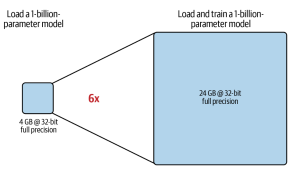
As data scientists and MLOps Engineers, you must have come across the challenges related to managing GPU requirements for training and deploying large language models (LLMs). In this blog, we will delve deep into the intricacies of GPU memory demands when dealing with LLMs. We’ll learn with the help of various examples to better understand how GPU memory impacts the performance and feasibility of training these LLMs. Whether you’re planning to train a foundation (pre-trained) model or fine-tuning an existing model, the insights are aimed to guide you through the crucial considerations of GPU memory allocation. Greater details can be found in this book: Generative AI on AWS. Understanding GPU …
Transformer Architecture Types: Explained with Examples
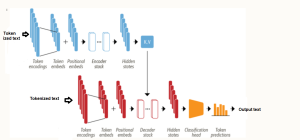
Are you fascinated by the power of deep learning large language models that can generate creative writing, answer complex questions, etc? Ever wondered how these LLMs understand and process human language with such finesse? At the heart of these remarkable achievements lies a machine learning model architecture that has revolutionized the field of Natural Language Processing (NLP) – the Transformer architecture and its types. But what makes Transformer models so special? From encoding sentences into numerical embeddings to employing attention mechanisms that capture the relationships between words, we will dissect different types of Transformer architectures, provide real-world examples, and even dive into the mathematics that governs its operation. Let’s explore …
Blueprint: Deploying Generative AI Applications
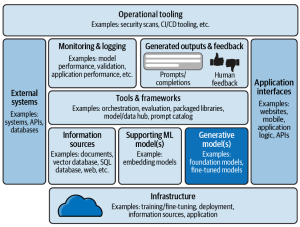
In this blog, we will learn about a comprehensive framework for the deployment of generative AI applications, breaking down the essential components that architects must consider. Learn more about this topic from this book: Generative AI on AWS. The following is a solution / technology architecture that represents a blueprint for deploying generative AI applications. The following is an explanation of the different components of this architectural viewpoint:
BERT vs GPT Models: Differences, Examples
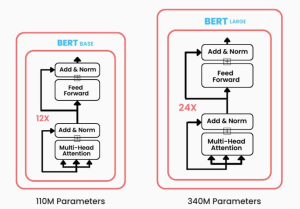
Have you been wondering what sets apart two of the most prominent transformer-based machine learning models in the field of NLP, Bidirectional Encoder Representations from Transformers (BERT) and Generative Pre-trained Transformers (GPT)? While BERT leverages encoder-only transformer architecture, GPT models are based on decoder-only transformer architecture. In this blog, we will delve into the core architecture, training objectives, real-world applications, examples, and more. By exploring these aspects, we’ll learn about the unique strengths and use cases of both BERT and GPT models, providing you with insights that can guide your next LLM-based NLP project or research endeavor. Differences between BERT vs GPT Models BERT, introduced in 2018, marked a significant …
Demystifying Encoder Decoder Architecture & Neural Network
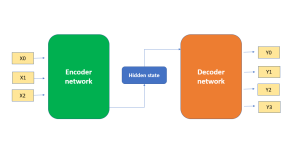
In the field of AI / machine learning, the encoder-decoder architecture is a widely-used framework for developing neural networks that can perform natural language processing (NLP) tasks such as language translation, text summarization, and question-answering systems, etc which require sequence-to-sequence modeling. This architecture involves a two-stage process where the input data is first encoded (using what is called an encoder) into a fixed-length numerical representation, which is then decoded (using a decoder) to produce an output that matches the desired format. In this blog, we will explore the inner workings of the encoder-decoder architecture, how it can be used to solve real-world problems, and some of the latest developments in …
Large Language Models (LLMs) & Semantic Search: Examples
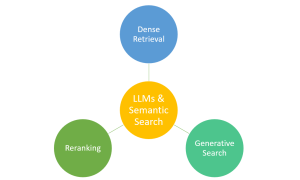
Have you ever marveled at how typing a few words into a search engine yields exactly the information you’re looking for from the vast expanse of the web? This is largely thanks to the advancements in semantic search, bolstered by technologies like Large Language Models (LLMs). Semantic search, which focuses on understanding the intent and contextual meaning behind queries, benefits from LLMs to provide more accurate and relevant results. However, it’s important to note that traditional search engines also rely on a sophisticated mix of algorithms, indexing, and ranking systems. LLMs complement these systems by enhancing their ability to interpret complex queries, making your search experience more intuitive and effective. …
I found it very helpful. However the differences are not too understandable for me